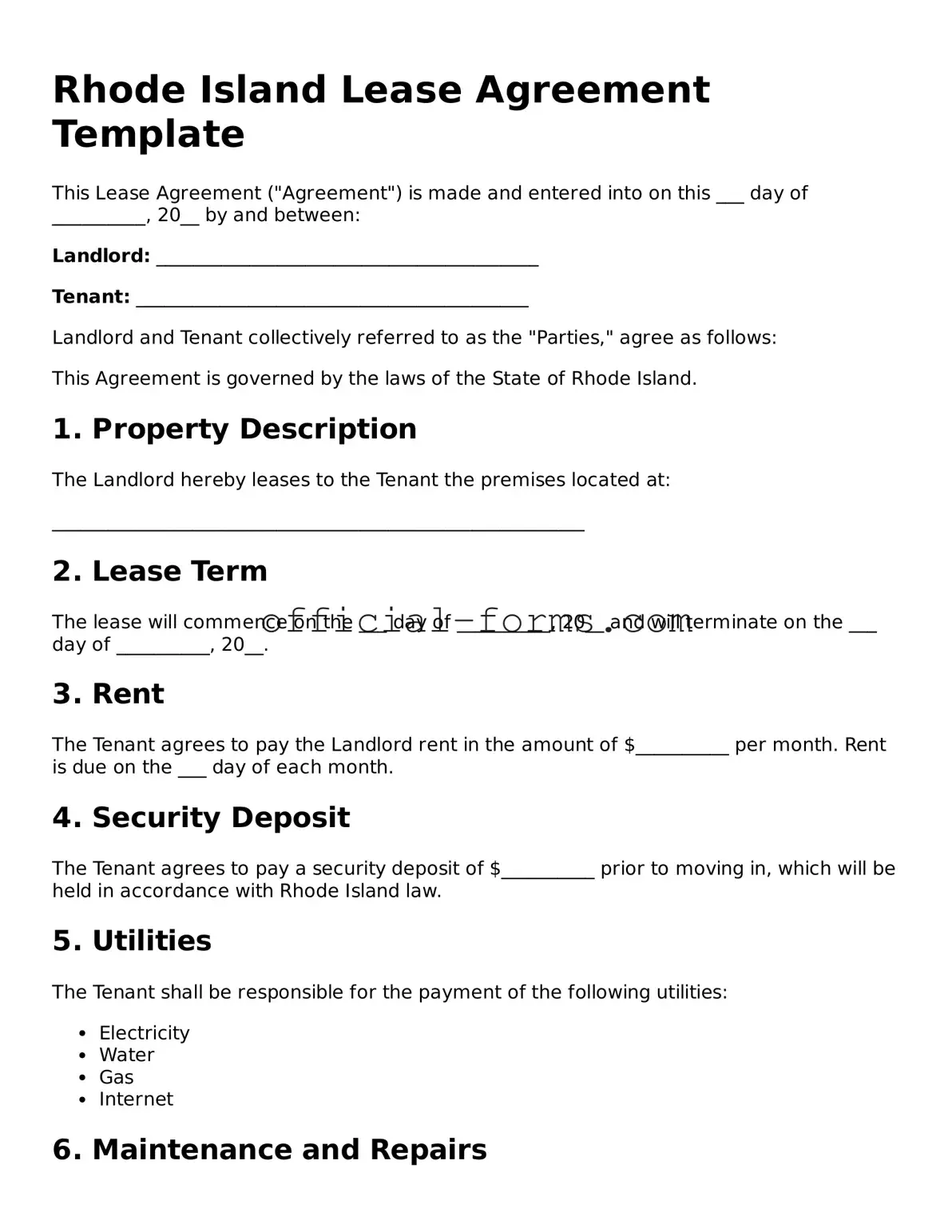Official Rhode Island Lease Agreement Document
A Rhode Island Lease Agreement form is a legal document that outlines the terms and conditions between a landlord and a tenant for renting residential or commercial property. This form serves to protect the rights of both parties while providing clarity on responsibilities, payment schedules, and property use. Understanding this agreement is essential for a smooth rental experience in Rhode Island.
Open My Lease Agreement Now
